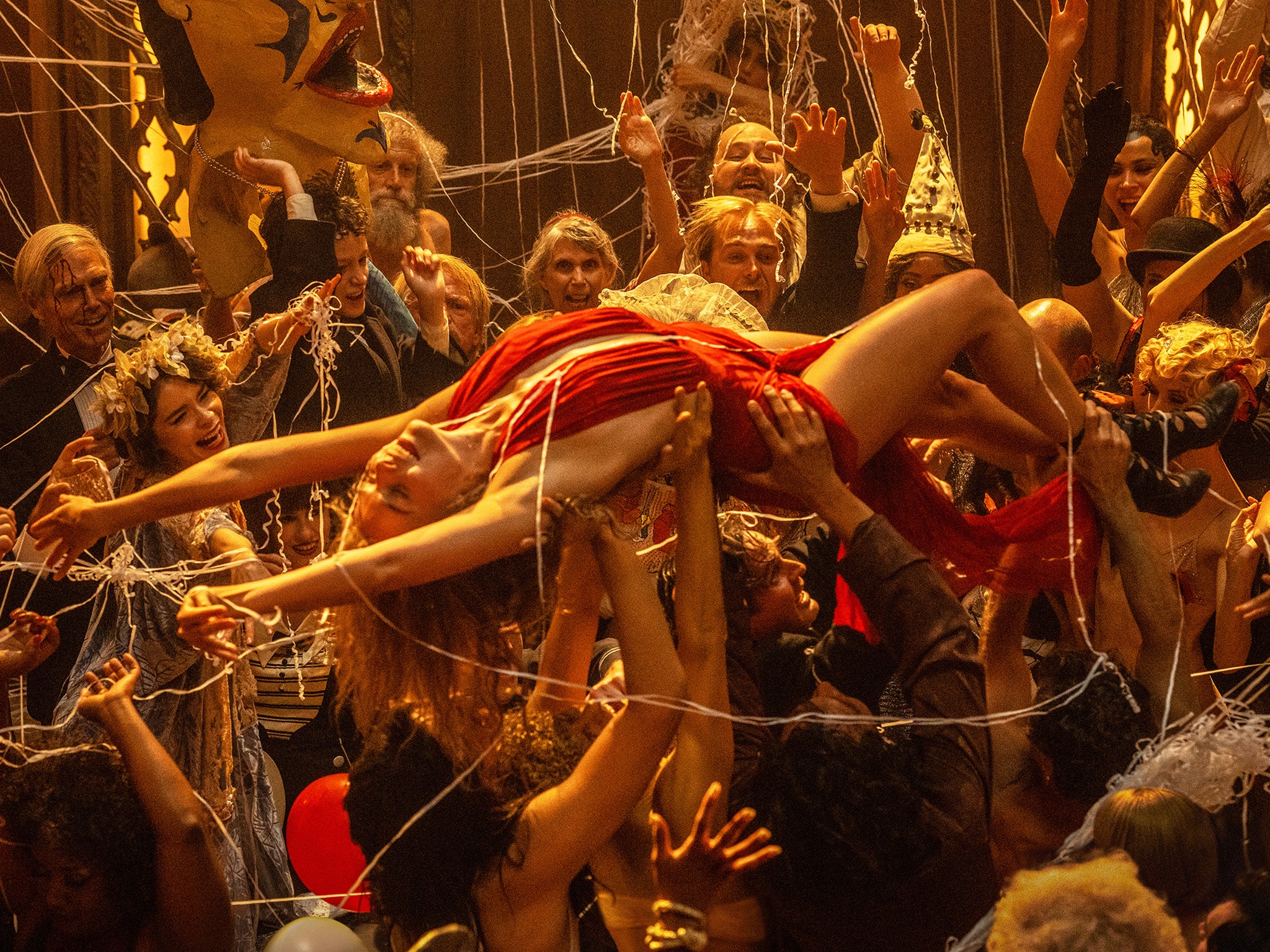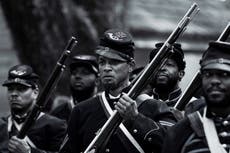The original ‘It-girl’ Clara Bow and her sisters in mayhem
The brilliant but wild Old Hollywood star was the key inspiration for Margot Robbie’s character in Damien Chazelle’s new epic ‘Babylon’. Geoffrey Macnab explores the tumultuous life of one of cinema’s early greats

Budd Schulberg, the virtuoso screenwriter best known for Marlon Brando film On the Waterfront, has a revealing story about Hollywood silent star and sex symbol Clara Bow in his memoir, Moving Pictures. Schulberg’s father, movie executive BP Schulberg, had signed Bow up to a long-term contract in the early 1920s. As a boy, Budd watched her on set shooting an emotional scene in her 1925 movie The Plastic Age. As always, Bow was playing a fast-living woman of the world but, in this role, she was required to show some raw feeling, too. When the director called action, the then 20-year-old redhead with the “flirty eyes, bee-sting lips and dimpled knees” began to weep uncontrollably like a “lost child”. Her tears were utterly convincing; she never needed the make-up department to squirt glycerine on her cheeks. “It takes a real actress to cry from the inside,” Schulberg noted with wonder.
You’d imagine that director Damien Chazelle must have read Schulberg’s book. His Oscar-tipped new movie Babylon, which shows silent era Hollywood at its most decadent and destructive, has a striking early scene on a movie set in which Nellie LaRoy (Margot Robbie) is also asked to weep. Nellie is a wild child. She chews gum, flirts with everybody, puts ice on her nipples so that they always stick out on camera, and tries to steal every scene in which she appears. That is why it is so startling when her eyes turn moist. The emotion seems to be entirely genuine.
Chazelle has acknowledged that Bow was the “biggest” inspiration behind the character of Nellie in his movie. After all, Bow was Hollywood’s original “It-girl”, the flapper scurrilously (and inaccurately) accused by Kenneth Anger in his book Hollywood Babylon of sexually servicing the entire University of Southern California American football team, including a youthful John Wayne. She lived fast and lived outrageously. She played very uninhibited women on screen.
Robbie’s Nellie shares many of Bow’s most famous traits ranging from her hedonistic promiscuity to her love of gambling. She is first seen on screen turning up in someone else’s car, gatecrashing an orgiastic party in a mansion in the desert and wheedling an invitation to work on a new movie. That’s when she wows everyone with her incandescent energy as well as her ability to cry at will. Like Bow, she has to support a ne’er-do-well father who is trying to live off her success.
The phrase “It” was coined by the Barbara Cartland-like romantic novelist and gossip columnist Elinor Glyn, who wrote a book of that title in 1927. She defined “It” as being something beyond sex appeal and that was only possessed by “people who were perfectly, perfectly self-confident”. Glyn felt that Bow was “It” personified, an opinion also endorsed by The Great Gatsby writer F Scott Fitzgerald, who described her in a 1927 article in Motion Picture magazine as “pretty, impudent, superbly assured... worldly wise”.
Chazelle is far too thoughtful a filmmaker simply to endorse the sexist cliche of the “It” girl without trying to deconstruct it. Inevitably, the perfect self-confidence projected by both Nellie LaRoy in Babylon and Clara Bow throughout the 1920s was only skin deep.
You don’t have to scrape very far to expose the cracks behind these women’s gleaming composure. Babylon reveals Nellie’s insecurity simply by including a scene of her family. The poverty and squalor of their living circumstances is all the more shocking because it is contrasted with the conspicuous consumption of the beautiful people in Hollywood, living their dementedly excessive and luxurious lives.

Look into Bow’s background and you quickly discover that she endured levels of childhood deprivation that make the lives of the most wretched orphans in Charles Dickens novels seems cosseted and luxurious by comparison. That was why, Schulberg speculated, she was so good at turning on the waterworks on camera. She had a lifetime of childhood misery to draw on. She grew up on the wrong side of the tracks, in the tenement slums of Brooklyn. Her unemployed, alcoholic father abused her sexually. Her mother was psychotic, continually threatening her physically and making it clear she disapproved of Bow’s showbiz ambitions. When the mother briefly turned to sex work to keep the family in food, little Clara had to hide in the cupboard to avoid her clients.
As an impoverished adolescent in New York, Bow went to the movies if she could afford it to escape the wretchedness of her everyday life. A few years later, she was starring in those movies. She had no training and no experience and yet quickly proved herself a screen natural. It says something for social mobility in silent-era Hollywood that she got so far so quickly.
Chazelle’s recreation of 1920s Hollywood gives credence to the salacious gossip that Anger peddled with such relish in his Hollywood Babylon books. There is an obvious gloating about the misfortunes he chronicles. Anger writes that when dissolute English occultist Aleister Crowley passed through town, even he was struck by the behaviour of the “cinema crowd of cocaine-crazed, sexual lunatics”.
Nonetheless, the books include enough photographs and documentary evidence to convince us that, behind the scenes in Hollywood, drug taking, alcoholism, abuse of minors, sexual violence and suicide were indeed everyday occurrences. The high living indulged in by the “film folk” went hand in hand with what Anger described as the “ever-present thrilling erotic fear that the bottom could drop out of their gilded dreams at any time”.

Chazelle also shows the other side of the Hollywood experience – the banality and hard work that went alongside the decadence. Producers were creating their movies in makeshift studios in the desert with cameras that were continually breaking down.
Given the roughhouse circumstances in which their movies were assembled, it was a small miracle that the flappers, vamps and It-girls of the era were able to project such effortless glamour. Clara Bow wasn’t the only one. Among the others were Theda Bara, described by Kenneth Anger as Hollywood’s “first sex queen”, and the irrepressible Colleen Moore, the star of 1923 Jazz Age hit Flaming Youth.
In interviews, Chazelle has also talked of his fascination with another ill-fated star of the era, Thelma Todd, the “ice-cream blonde” who died in mysterious circumstances aged only 29 in 1935. Anger writes with typical macabre gloating of the discovery of Todd’s “slumped corpse, her mouth, evening gown and mink coat spotted with blood”.
Some of the It-girls were very young indeed. Bow herself was still a teenager when she began her career in earnest – and less than 30 when it ended. “She just popped off the screen,” film historian Leonard Maltin tried to explain her appeal in a BBC documentary on “Hollywood’s Lost Screen Goddesses”.

Others talked of her “effervescence”, “enthusiasm” and sheer force of personality. These are all qualities that Robbie picks up perfectly in her restlessly energetic portrayal of Nellie in Babylon.
On screen, these qualities were cherished. Off screen, they were problematic. As Babylon shows, Nellie is spurned by Hollywood high society. She may be a big bankable star but she is also irredeemably vulgar in the eyes of the socially pretentious studio bosses. They don’t like her accent or her manners.
Everything about Bow’s career was paradoxical. She was spontaneous and seemingly carefree and yet costume designers, hairdressers, make-up artists and publicists worked tirelessly on crafting an image for her. She was celebrated for her wildness and yet ultimately the gossip columnists and studio bosses became censorious about her private life, in particular her string of lovers (everyone from her Wings co-star Gary Cooper to Gone with the Wind and Wizard of Oz director Victor Fleming).
Clara Bow, like many of the other It-girls, came to grief at the beginning of the talkie era. They weren’t trained actors with years of stage experience behind them. Clara’s New York accent was considered as grating as Nellie’s strident New Jersey tones in Babylon. According to Anger, the “Brooklynese boom of Clara’s voice ... blew every valve in the recording room.”

By the early 1930s, attitudes were changing anyway. This was the Depression era. Cash-strapped fans were no longer indulgent towards the high-living, narcissistic antics of Jazz Age flappers. By then, Bow herself was exhausted, having made more than 50 films in the space of six or seven years. She was an insomniac who had spent the better part of a decade working and partying herself to a standstill. It didn’t help either that she was being blackmailed by her former secretary Daisy DeVoe, who had been embezzling from her and was threatening to sell the secrets of her love life to the tabloids. That in itself was jarring. Bow never pretended to be an angel and didn’t have secrets. She was famously open about her private life. Nonetheless, she was libelled in the press, accused of everything from incest to alcoholism, drug addiction and even bestiality. She fled Hollywood.
Bow made a successful but short-lived screen comeback in the talkie Call Her Savage (1932), speaking then of her new-found desire to be known as a “serious actress, not as an It-girl”. She followed that up with Hoopla (1933). This turned out to be her final film. Her previously happy marriage to actor Rex Bell broke up. She was diagnosed as schizophrenic and clearly tormented by horrific memories of her childhood. It wasn’t a happy part of her life at all but nor did it provide quite the car crash ending that Kenneth Anger would doubtless have liked for her. Bow didn’t die young. Instead, after living quietly in Los Angeles, she passed away aged 60 in 1965 in near obscurity.
Almost 100 years after her heyday, the “hottest jazz baby in film”, as she was called in the 1920s, is largely forgotten today. Chazelle’s Babylon is a story of excess and despair in which the once big-name stars take their own lives or disappear into the night. It would be a welcome irony, though, if the film revives memories of the real-life It-girl who inspired Margot Robbie’s character. Bow came from nothing, reached the top, becoming the biggest money-maker in Hollywood, and then vanished when still only in her late twenties. It’s high time that she is pulled out of the shadows, a process that Robbie’s memorably febrile, tear-stained performance as Nellie might just hasten.
‘Babylon’ is released in the UK on 20 January



Join our commenting forum
Join thought-provoking conversations, follow other Independent readers and see their replies
Comments